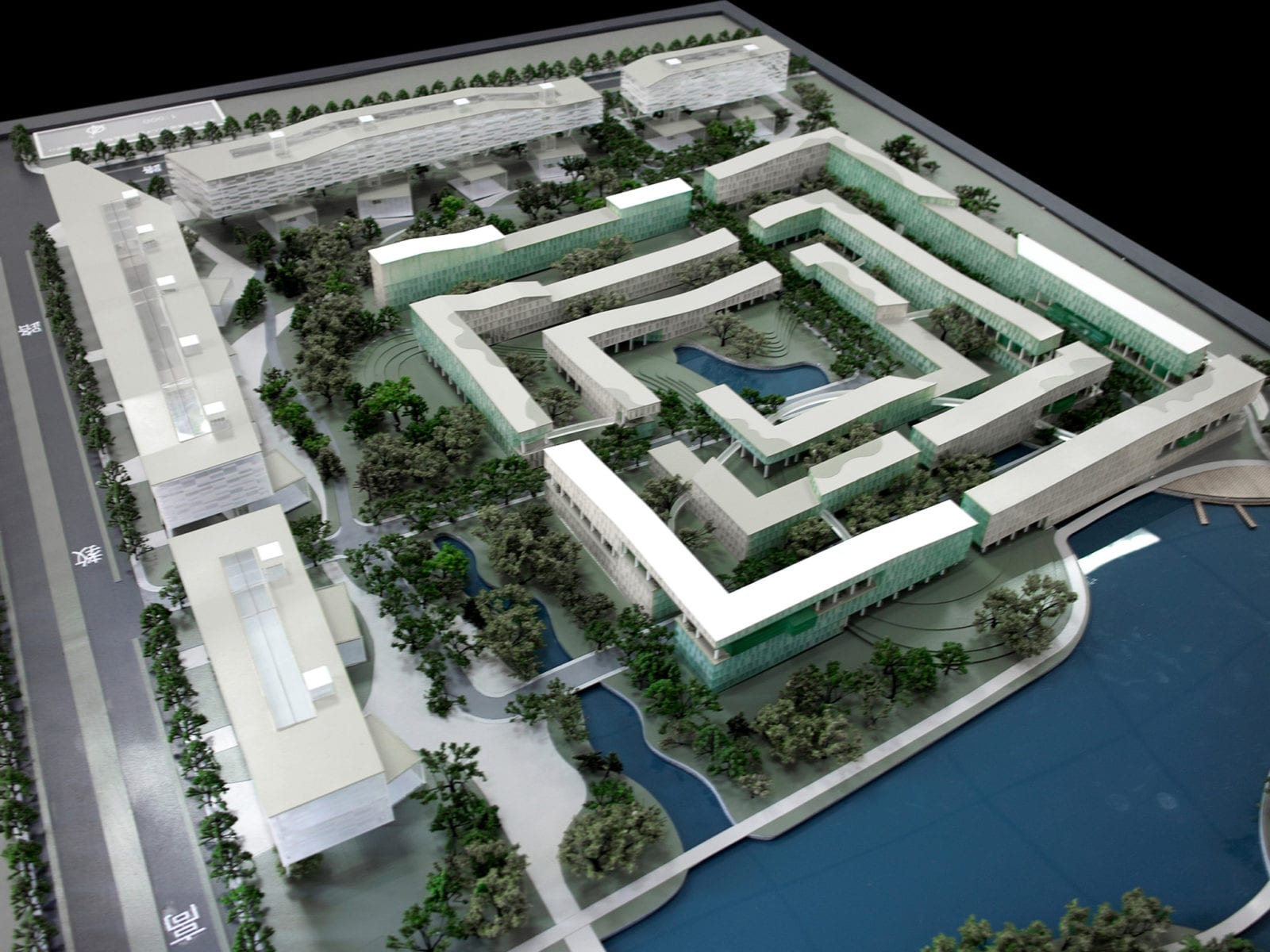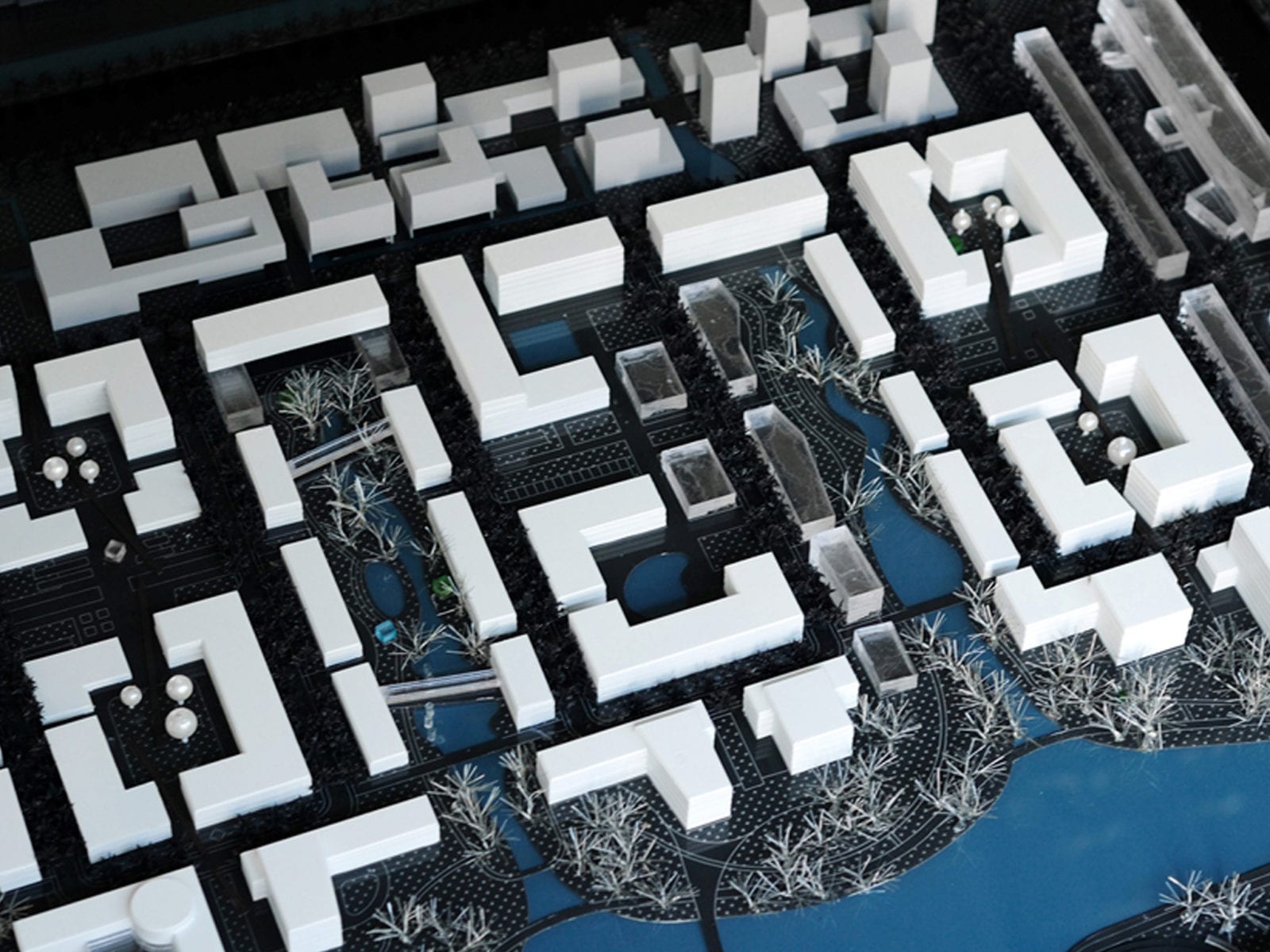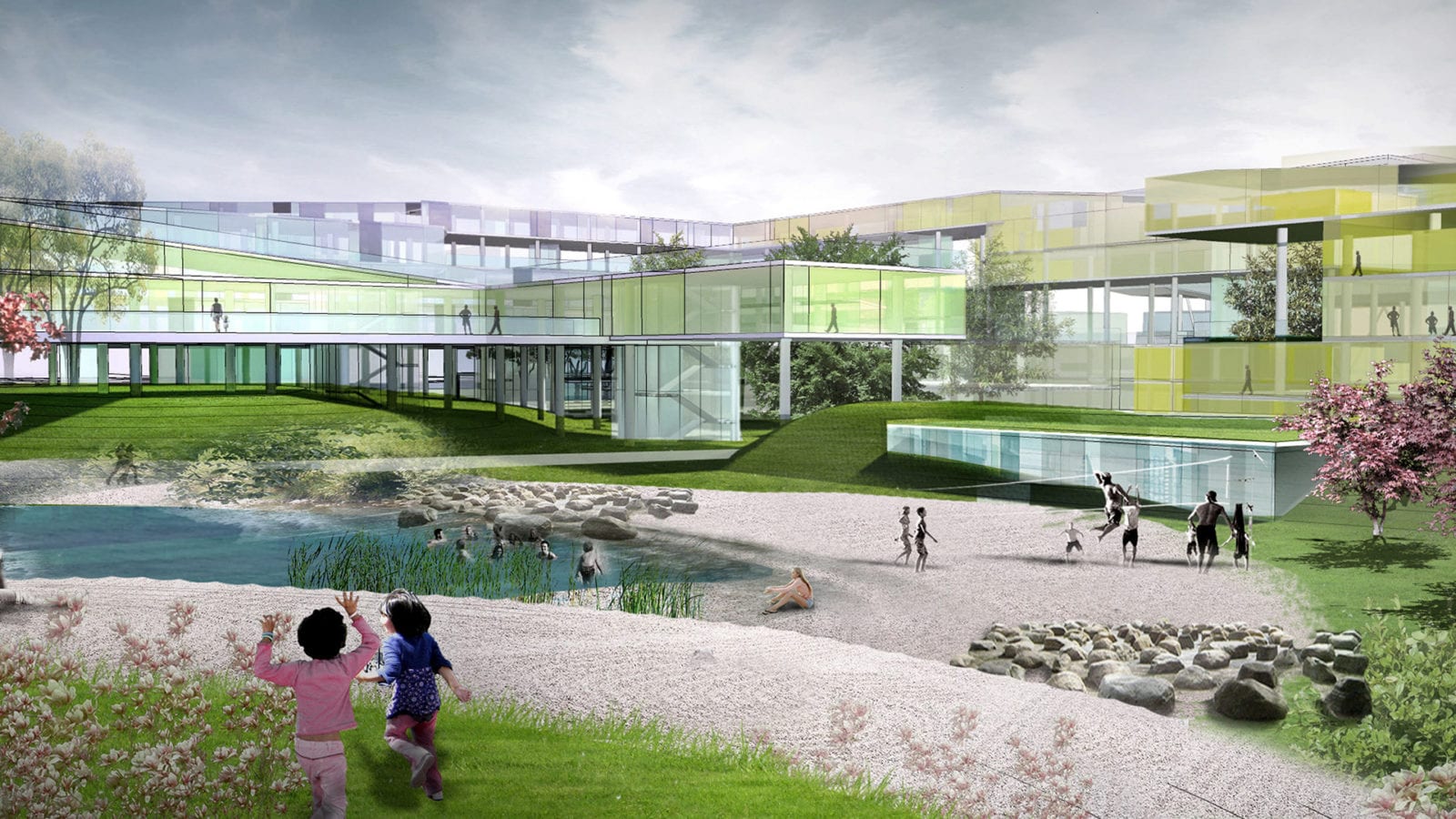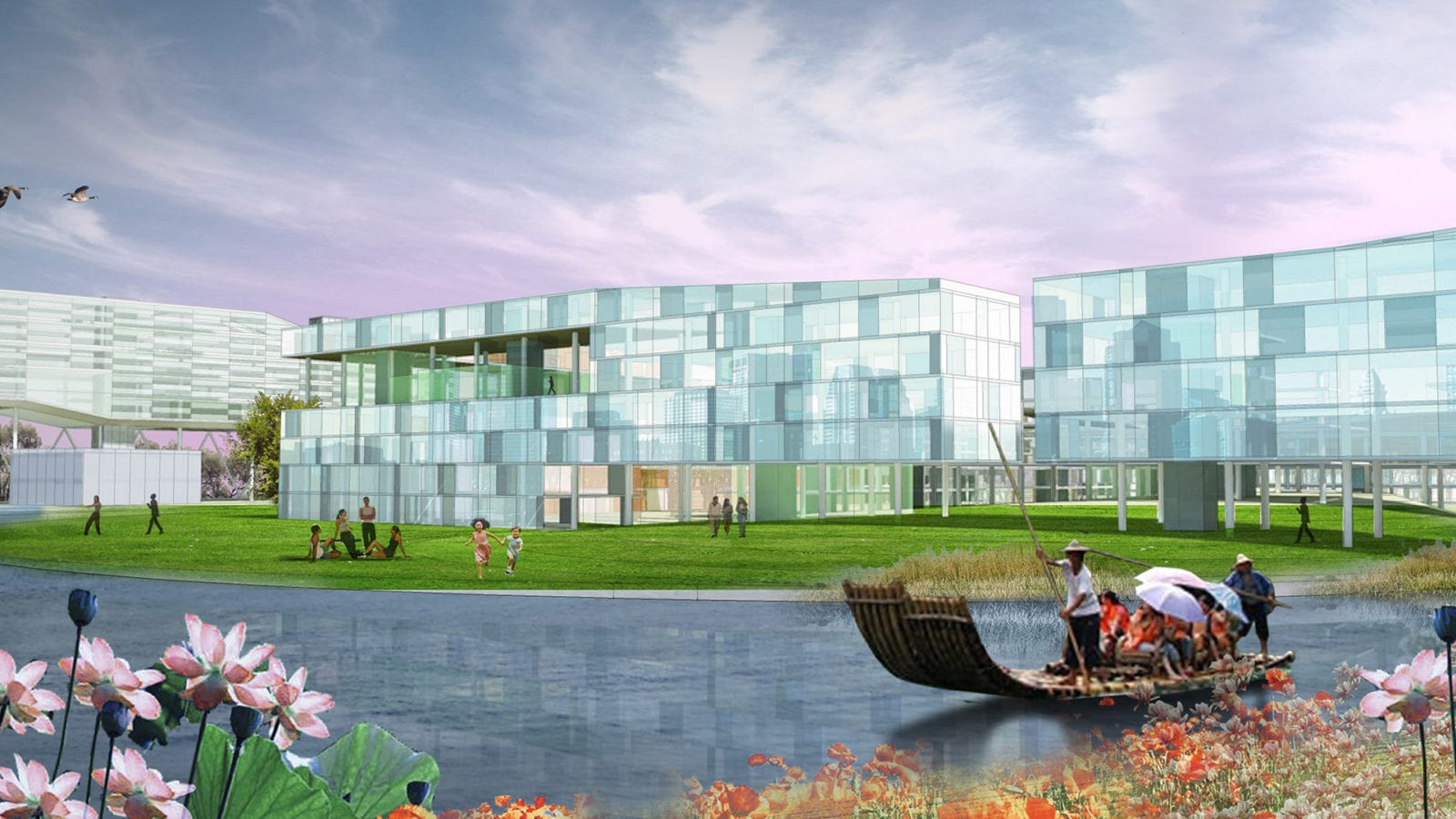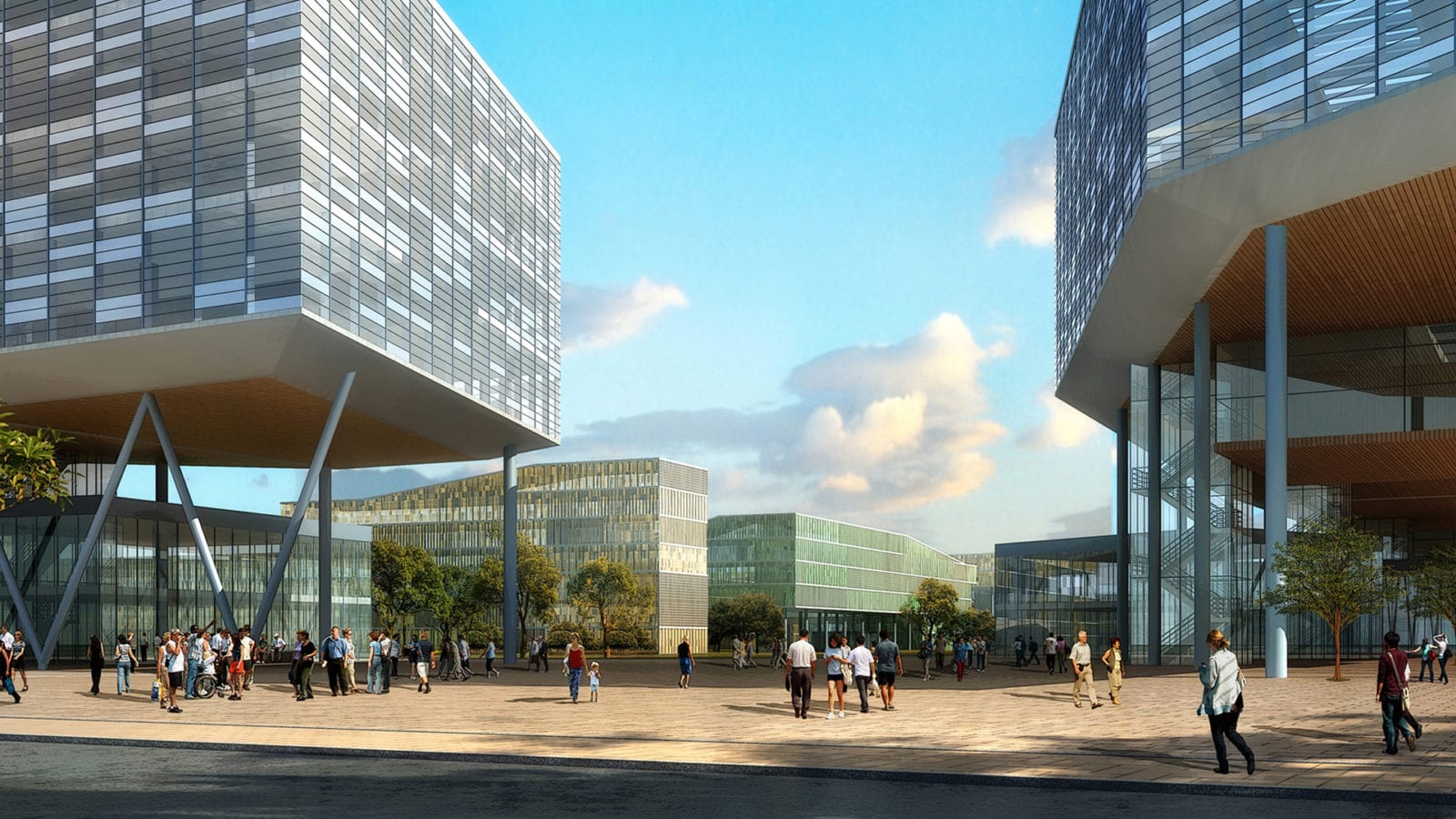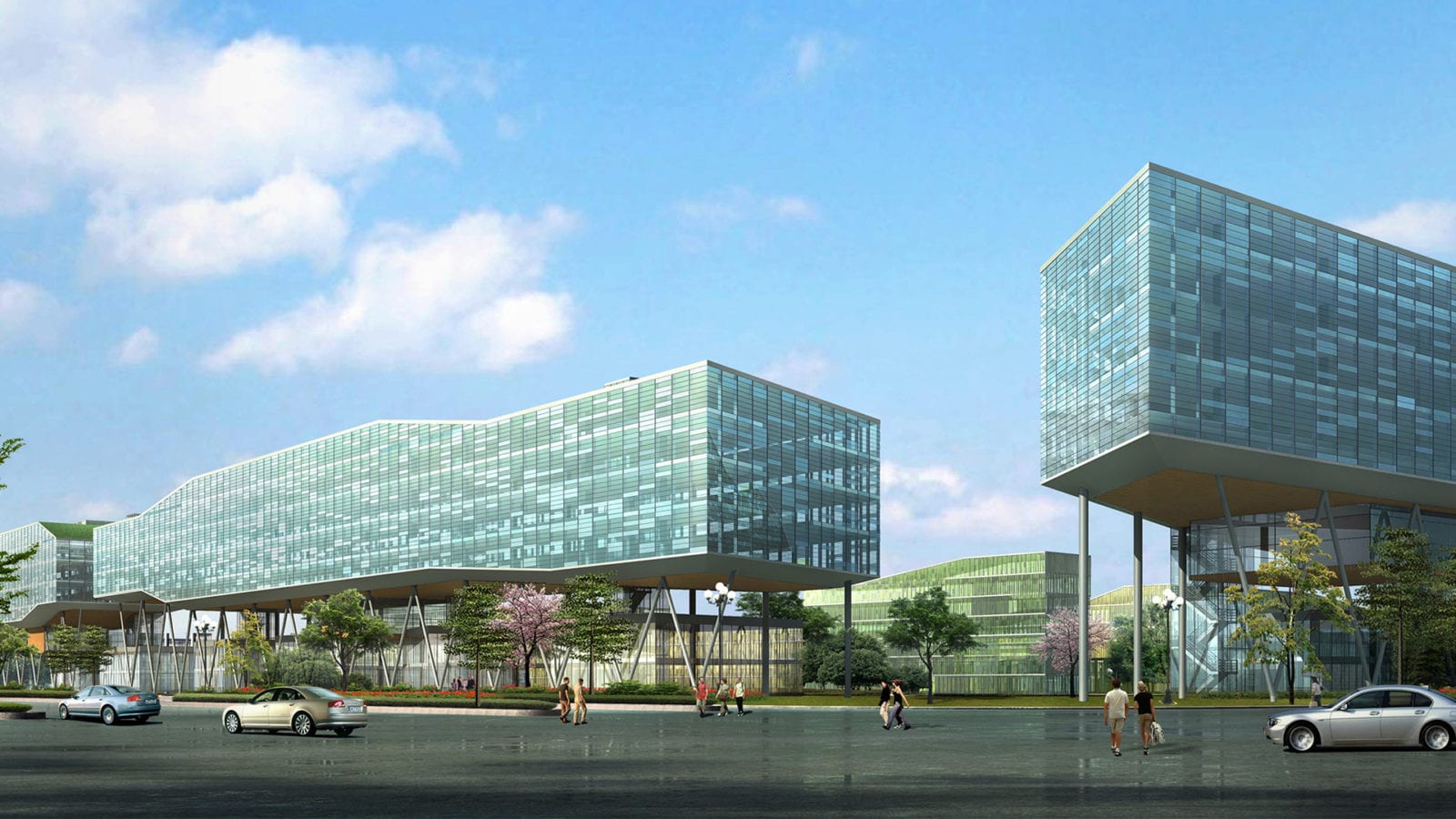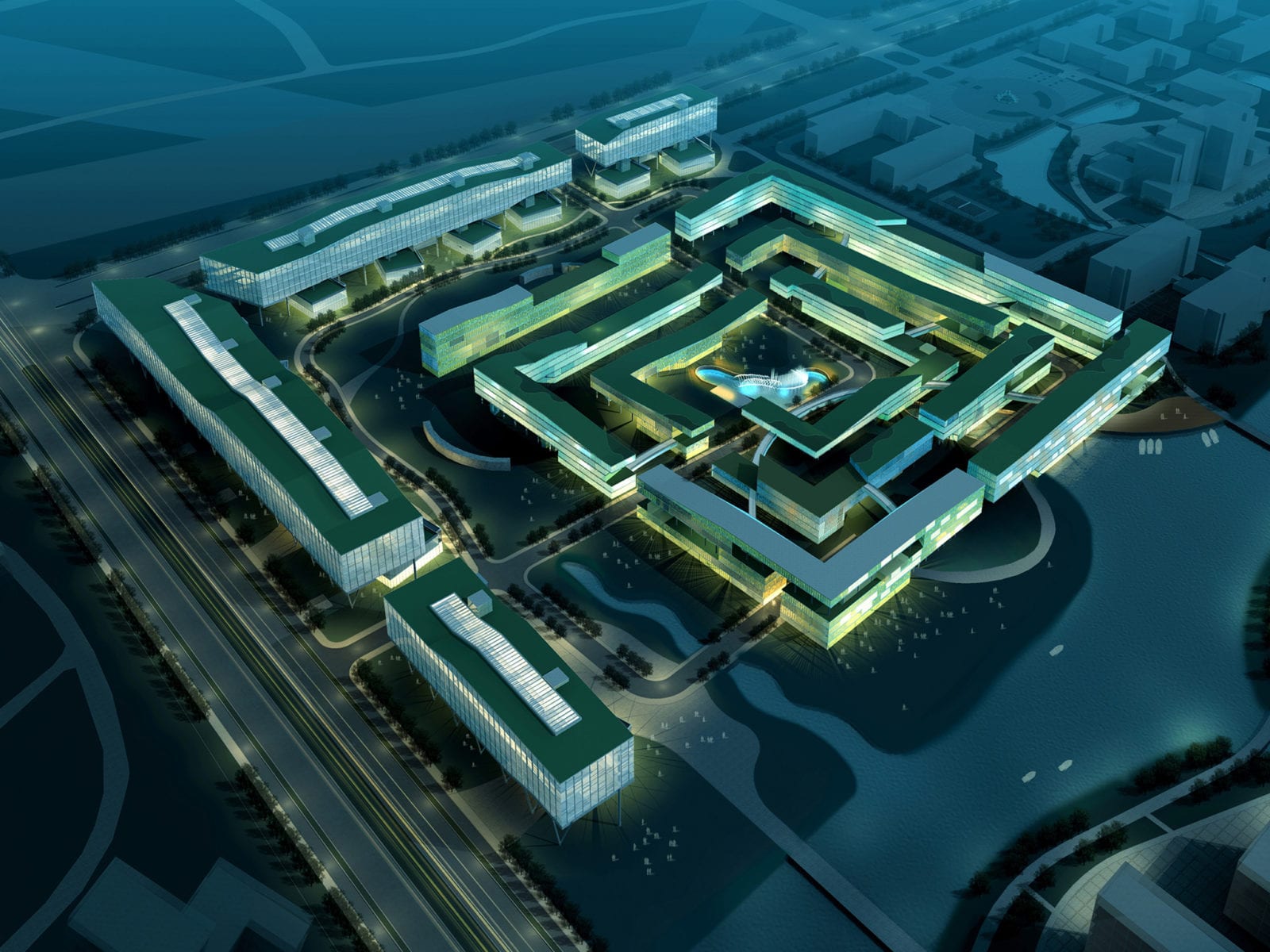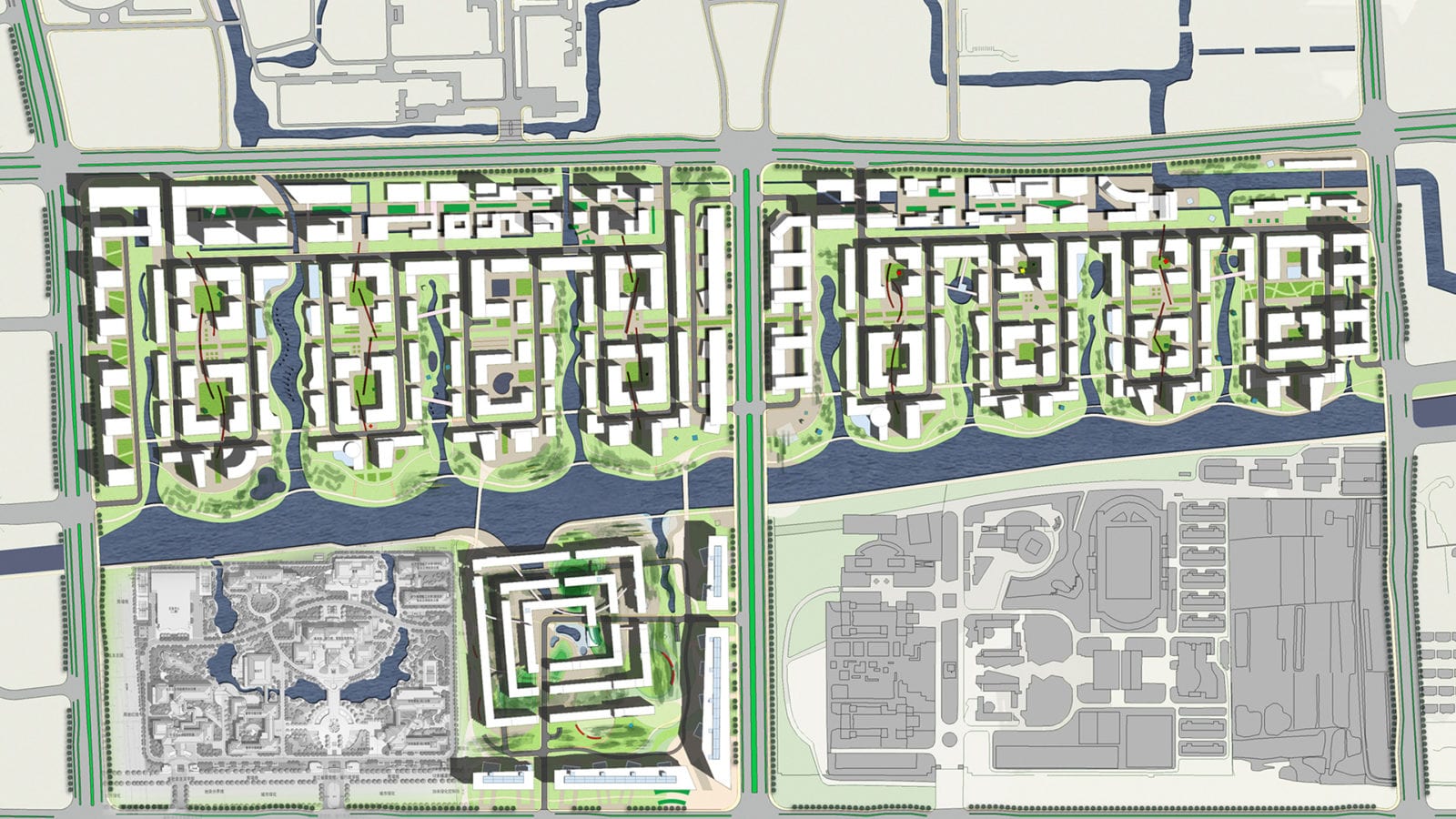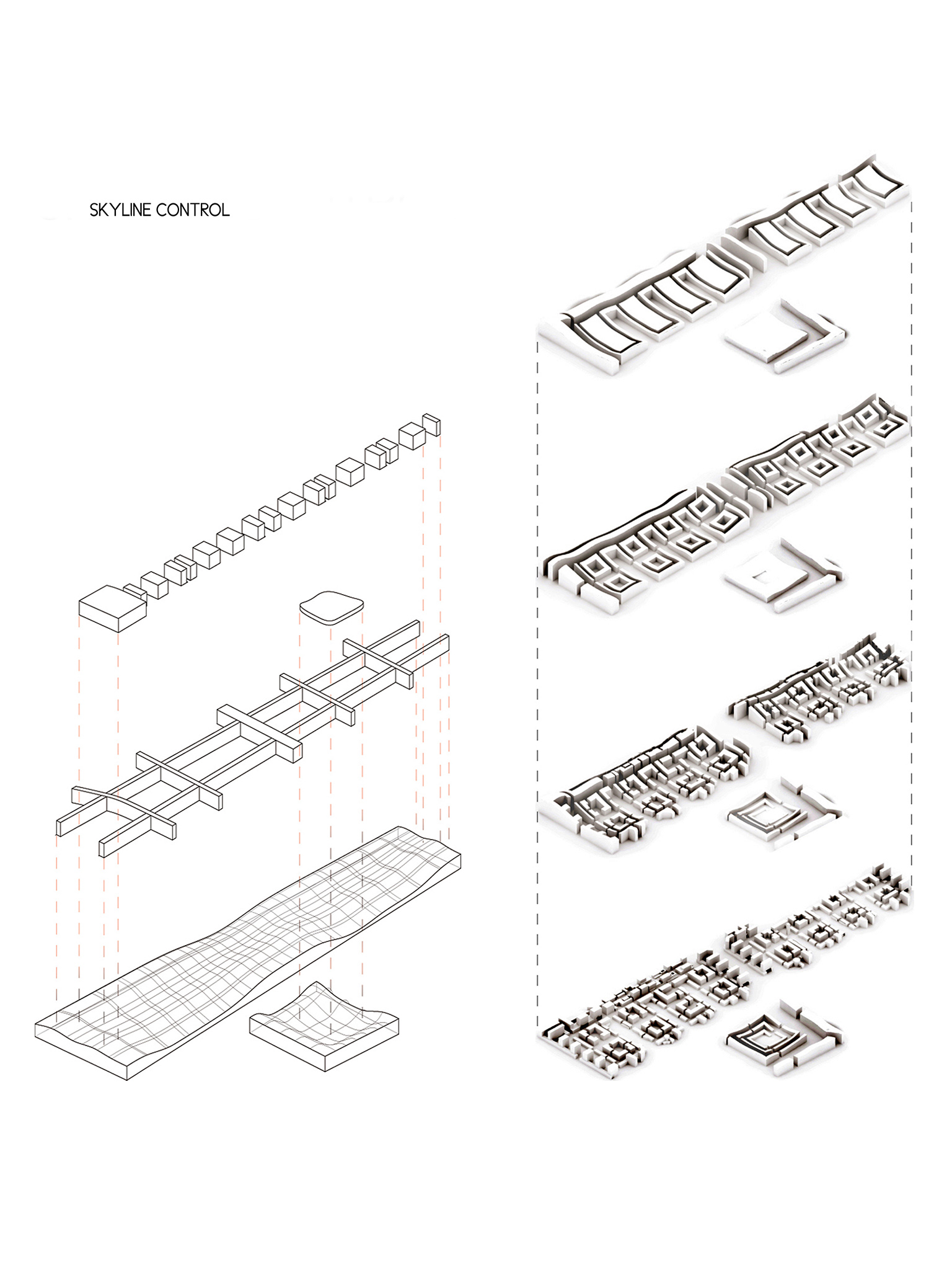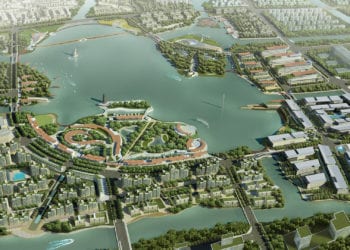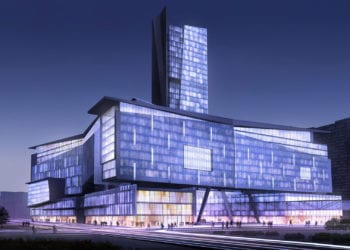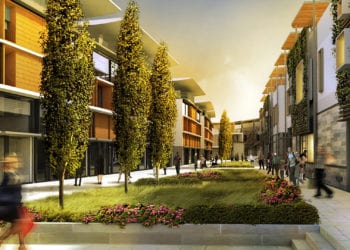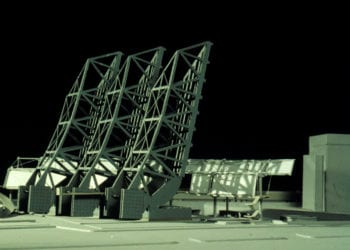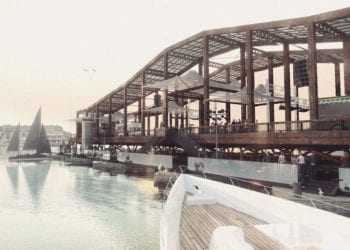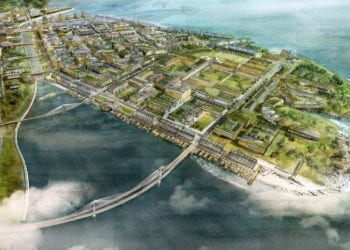Synopsis: Inspired by the gardens, courtyards, and paths of historic Suzhou, this new multi-use district in Yuhang, China, presents a sustainable model for collaborative scientific research, integrating scientific development with ecological restoration. The maze-like structure enables interdisciplinary interaction, both spontaneous and planned, among researchers and residents as well as multiple perspectives on surrounding scenery and waterways, fostering communion with nature and each other.
Description: This new multi-use district (research facilities, labs, offices, residences, housing) enhances innovation and creativity among its inhabitants while integrating the site’s ecology and landscape. It draws inspiration from the famous gardens at Suzhou where courtyards, paths, and wall openings frame views of the landscape to articulate the delicate balance between building and garden, man and nature, order and chaos, finite and infinite, etc. The courtyard type varies slightly with each building configuration. Access to each courtyard is subtly skewed to alter the view of the landscape and buildings. Each building is surrounded by the water of the redefined canal so that the land and the waterways interlock like fingers in folded hands.
This distribution of uses and circulation creates unexpected encounters among fellow researchers and residents, both with each other and with nature. This alters the way people regularly view one another and their environment to spark new ideas and thinking. The “Maze” building structure is elevated mainly above the landscape, allowing easy vehicular and pedestrian access. The string of buildings is connected by bridges that provide multiple experiential paths through the “maze” and immerse researchers in spaces that are both built-natural and finite-infinite to generate new ideas.

